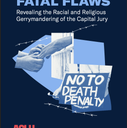
On January 17, 2006, California executed Clarence Ray Allen, who was 76 years old, legally blind, diabetic, and used a wheelchair. He was the last person the state has executed. A decade later, California’s death row population has increased by 100 to 746, making it the largest in the nation. The state has executed 13 prisoners in 40 years at an estimated cost of $4 billion, while more than 100 other prisoners have died on death row. Prisoners wait 11 – 15 years to be appointed counsel, and the entire appeal process routinely takes 20 – 25 years. In November 2015, California proposed a new, one-drug lethal injection protocol, but the protocol cannot be implemented until it goes through a public vetting process, which may take years, and then survives legal challenges. This November, California voters may be presented with two competing ballot measures — one that aims to shorten the time between conviction and execution by speeding up the appeal process and another that would abolish the death penalty. A prior referendum to abolish the death penalty failed 48% to 52% in 2012. Commentators close to the issue say California’s death penalty isn’t working. Jeanne Woodford, who worked at San Quentin for over 25 years and oversaw executions, said that many of those who were sentenced to death were young men, “the very people whose behavior changes over time.” Donald Heller, who wrote the initiative that expanded California’s death penalty in 1978, said he did so based upon two assumptions about the death penalty that have proven to be false: “The first was that it would deter murders. The second: I assumed defendants would have competent representation.” He also voiced concerns about the potential execution of innocent people: “If you have an imperfect system taking someone’s life, it’s a little bit frightening.”
(L. Segura, “Ten Years After Last Execution, California’s Death Row Continues to Grow,” The Intercept, January 17, 2016.) See Lethal Injection and Recent Legislation.



